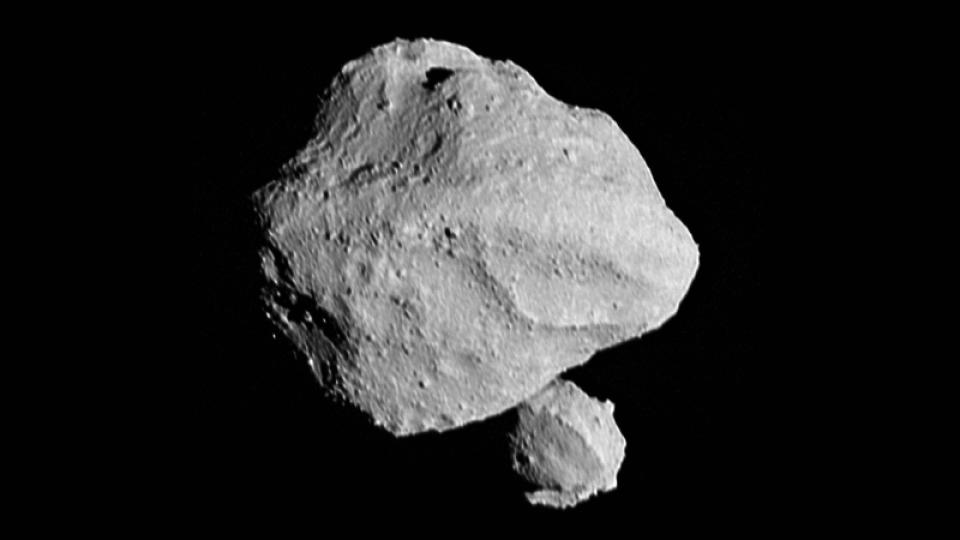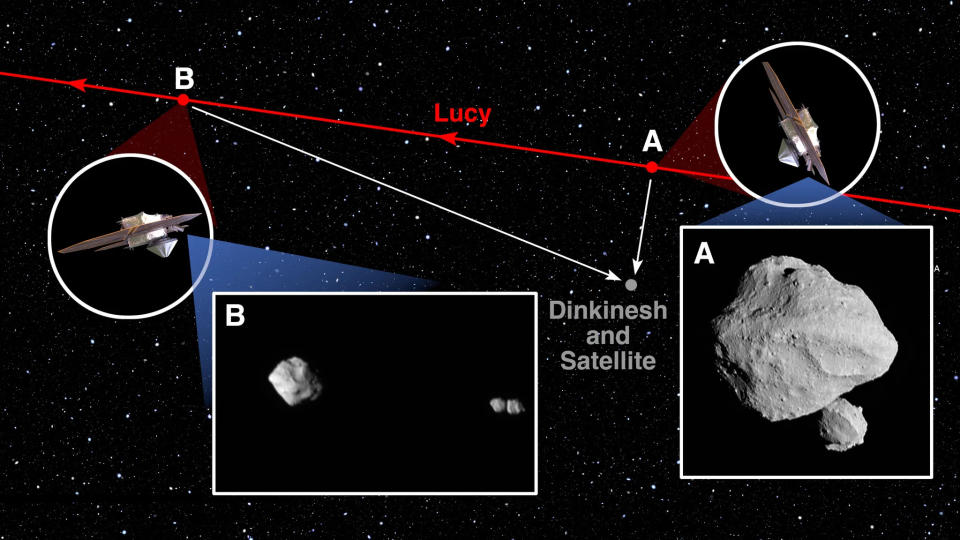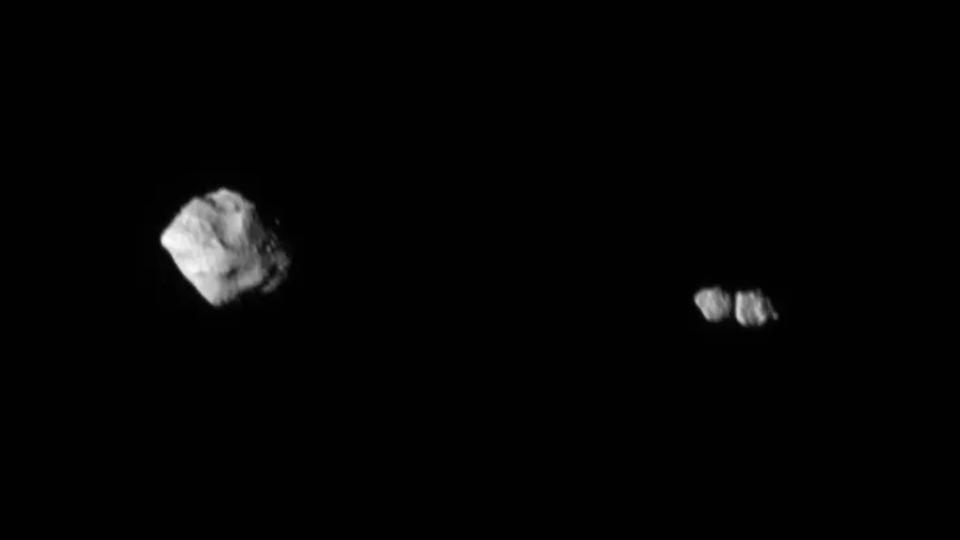Surprise! Asteroid Dinkinesh's tiny moon was hiding a secret!

Last week, NASA's Lucy spacecraft revealed a small moon orbiting around its first flyby target. Still, new images have turned this into a unique, one-of-a-kind discovery.
On November 1, 2023, one of NASA's newest space missions — the Lucy mission to Jupiter's Trojan asteroids — flew past its first target, Dinkinesh. The asteroid's shape and surface details were crisp and clear in the images downloaded from the spacecraft right after the encounter. There was also something surprising: it had a tiny asteroid moon orbiting around it.

Asteroid 152830 Dinkinesh is pictured here on Nov, 1, 2023, by the L'LORRI camera, along with its newly-discovered companion moon. Credit: NASA/Goddard/SwRI/Johns Hopkins APL/NOIRLab
When new images from the encounter arrived via NASA's Deep Space Network, they showed Lucy's changing perspective as the spacecraft got farther away from the asteroid pair.
Along with that shift in perspective came something completely unexpected. Snapshots from the spacecraft's camera showed that small asteroid moon is actually two small asteroid moons so close together that they touch. A contact binary!
DON'T MISS: Are you ready for the April 8, 2024, Total Solar Eclipse? Here's how to prepare

This diagram shows the trajectory NASA's Lucy spacecraft followed as it passed asteroid Dinkinesh (red) during its November 1, 2023 flyby. The inset image to the right ('A') shows one of the closest shots the spacecraft took at 12:55 p.m. EDT, revealing Dinkinesh's satellite. The inset image on the left ('B') shows what Lucy saw five minutes late, at 1 p.m. EDT. Credits: NASA/Goddard/SwRI; Inset A - NASA/Goddard/SwRI/Johns Hopkins APL/NOIRLab; Inset B - NASA/Goddard/SwRI/Johns Hopkins APL
According to NASA, this is the very first contact binary asteroid discovered that orbits another asteroid.
"Contact binaries seem to be fairly common in the solar system," John Spencer, Lucy deputy project scientist at the Southwest Research Institute (SwRI), told NASA. "We haven't seen many up-close, and we've never seen one orbiting another asteroid."
"We'd been puzzling over odd variations in Dinkinesh's brightness that we saw on approach, which gave us a hint that Dinkinesh might have a moon of some sort, but we never suspected anything so bizarre!" Spencer explained.

This image was snapped by the Lucy Long-Range Reconnaissance Imager (L'LORRI) from about 1,630 kilometres away from the primary asteroid. From this perspective, Dinkinesh's satellite is revealed to be a contact binary, the first time a contact binary has been seen orbiting another asteroid. Credit: NASA/Goddard/SwRI/Johns Hopkins APL
Contact binaries could potentially form under a number of different circumstances. However, the most common would seem to be in the aftermath of a catastrophic collision. So, an asteroid is broken apart by some impact. Then, the gravity of the resulting pieces slowly pulls them back together until they touch.
AMAZING SCIENCE: Largest solar storm ever revealed by ancient tree rings
The odd 'rubber duck' shape of Comet 67P/Churyumov–Gerasimenko, the target of Europe's Rosetta spacecraft from 2014-2016, is thought to have come from this process. Asteroid (25143) Itokawa, visited by Japan's Hayabusa spacecraft in 2005, is another closely studied contact binary that is shaped like a peanut.

Comet 67P/Churyumov–Gerasimenko (left) as imaged by the Rosetta Spacecraft on August 6, 2014, from a distance of about 120 kilometres, and asteroid Itokawa (right) in a snapshot taken by the Hayabusa spacecraft in 2005. The objects are not scaled. Credit: ESA/Rosetta/MPS for OSIRIS Team MPS/UPD/LAM/IAA/SSO/INTA/UPM/DASP/IDA and ISAS/JAXA
In both cases, debris appears to have loosely filled the point where the objects touch, giving each the illusion of being only one object. In the case of Dinkinesh's satellite, though, it is much easier to tell that it's two distinct objects. There doesn't seem to be any excess debris filling the gap between them. Did the impact that created the pieces simply crack the original asteroid in two? Did the smaller debris get pulled to Dinkinesh or ejected from the system? Or is there some other explanation?
"It is puzzling, to say the least," Hal Levison, the principal investigator for Lucy at SwRI, said in the NASA Science press release. "I would have never expected a system that looks like this. In particular, I don't understand why the two components of the satellite have similar sizes. This is going to be fun for the scientific community to figure out."

